The Clockwork Rocket Read online
Page 16
“Whatever you like,” Yalda replied. “You can look around and decide what suits you. I’ll take care of you until you find a job.”
“But there’s work for me here; I don’t need a new job.”
Yalda said, “Don’t you want to see more of the world than this?”
“That might be nice,” Lucia conceded. “But I’d miss everyone.”
“You could come back and visit, any time,” Yalda promised her.
Lucia thought for a while. “Let me wake Lucio.” She took a few steps before Yalda grabbed her arm.
“No! You can’t—”
“You’re not inviting him too?”
“No.”
“Are you crazy?” Lucia was baffled. “Why would I go to Zeugma without him?”
“That’s the whole point of leaving!” Yalda said, exasperated. “If you go by yourself, you won’t have to worry.”
“Worry about what?”
“Children.”
Lucia said, “We’re not having children for at least four more years. If we went with you to Zeugma, it wouldn’t be any different.”
“Four years?”
“Yes.”
Yalda sat on the ground, shivering, not knowing whether to believe her. “Aurelia didn’t wait. Claudia didn’t wait.”
“Well, I’m not Aurelia.”
“Don’t you miss them?”
“Of course I do,” Lucia replied. “If you missed them so much,” she added pointedly, “you should have visited more often.”
Yalda was ashamed. “I didn’t think I’d lose the chance so soon.” She searched her sister’s face, determined to uncover the family’s secrets. “What happened? Did Giusto force them?”
“He nagged them,” Lucia said. “But they had their own ideas, it wasn’t all down to him.”
“And you think he’ll let you wait four years?”
“It’s not his decision, Yalda! Lucio and I have everything planned: we’re going to work on the new farm together and save as much money as we can. Then when the time comes, he’ll hire some people to help run the farm for a couple of years while he takes care of the children. If some of the young cousins want to do it, that’s fine, but we’re not going to rely on that.”
Yalda said, “And what if you change your mind? What if you want to wait longer?”
“Then we’ll wait,” Lucia said mildly. “He’s not going to force me.”
“What makes you so sure of that?”
“He’s my co! I’ve known him my whole life.”
“Men are driven to have children,” Yalda said. “It’s in their nature, they can’t help it.” How had Daria put it? “It’s what they were invented for. There are no male insects, no male lizards—because the young of those creatures can look after themselves from birth. The only reason men exist is so they can raise children.”
Lucia said, “Women are driven to have children, too. Do you think I didn’t feel the urge myself, when I saw Aurelia’s? But if I can hold off, so can Lucio. Neither of us are helpless.”
“But you’re the only one who pays with your life.”
“Yes,” Lucia agreed. “But that’s not Lucio’s fault. It’s not in his hands, or anyone’s. However much he cares about me, he can’t take my place—that’s just impossible.”
Yalda sat in silence for a while. The stars were beginning to fade; she’d need to leave soon.
“Do you want to wake Lucio, and ask him?” If she could show them both life in Zeugma—show them both some new possibilities—that would still be worthwhile.
Lucia said, “It’s not the kind of thing we should decide in a hurry. We’ll talk about it over the next few days; if we want to come, we’ll follow you.”
“All right.”
Yalda stood and embraced her. “You won’t let Giusto pressure you?” she pleaded.
“I won’t,” Lucia promised. “Do you think Vito taught his other children nothing?” A thin gray ridge appeared on her chest; at first it was barely visible, but then it strengthened and grew, looping across the skin until it spelt out a shaky sequence of symbols: Safe journey, sister.
“You could use that skill in Zeugma,” Yalda enthused.
Lucia said, “Maybe. Go and catch your truck before someone else wakes and you have to explain why you’re sneaking out on us.”
“Write and let me know when you’re coming,” Yalda said.
“Of course.”
Yalda turned and walked away. She watched Lucia in her rear gaze until they lost sight of each other behind the dying red light of the fields.
“I have a gift for you,” Cornelio announced solemnly.
“A gift?” Yalda had accepted his invitation to the chemistry department as much out of courtesy as curiosity, but she’d hoped there’d be more to the visit than the bestowal of some token of gratitude. “Your success in your work is all the thanks I need.” With her rear gaze, she eyed the glistening vials and bottles on the shelves that lined the workshop, trying to remember how long it had been since the building had last had its roof blown off.
“That’s very gracious of you,” Cornelio said. “But have you forgotten your request?”
Her host sounded more amused than offended, but Yalda searched her memory desperately. She’d spoken to Cornelio for a chime or two after her talk to the school of natural sciences, but they’d discussed so many things that it was impossible to recall the entire conversation, ten stints later.
“I asked you what the one thing was that you’d welcome the most,” Cornelio reminded her, “if we were to repay you with something practical.”
Yalda wasn’t sure how seriously she’d taken the question, but she remembered now what her answer had been. “And you’ve made good on that offer already?”
“It’s not perfect,” Cornelio admitted. “But you might find it useful nonetheless—worth having, even short of perfection.”
“Of course.” Yalda set her anxieties aside. If Cornelio really had created what she’d asked him for, it was well worth the risk of being here.
“Let me show you.” Cornelio led her to a bench at the side of the workshop. In lieu of a heliostat, he’d set up a pair of manually adjustable mirrors that brought sunlight into the room and directed it into a box three spans or so wide.
He opened the side of the box, revealing a prism mounted within that split the beam into a spectrum that fell on a white screen. “Note the locations of the various hues, if you will,” he suggested to Yalda.
“Noted.” After witnessing three Hurtlers over Zeugma, Yalda could memorize the position of a spread of colors against any backdrop in an instant.
Cornelio covered the aperture that admitted the sunlight into the box with a card pierced by a far smaller hole. The spectrum remained visible, but it was much dimmer now. Then he slid a second, entirely opaque card into another slot, parallel with the first one, blocking the light completely.
Next, he took what appeared to be a stiff sheet of paper from a cupboard below the bench, and fastened it in place over the screen where the spectrum had been seen. Then he produced a small vial that had been divided partly in two, with one half containing an orange powder, the other a green resin. He attached the vial to a loop of cord that dangled into the interior of the box through its top face.
Cornelio closed the side of the box, carefully checking that there were no gaps along the edges. “This needs to be entirely sealed against the light,” he said. “Not a crack.”
Yalda was surprised by his diligence, but it was a good sign. “I understand.”
“First, you shake the vial,” Cornelio explained, taking hold of the cord where it protruded from the top of the box and jiggling it slightly. “That lets the ingredients react, and the gas that’s produced activates the paper.”
“Activates?”
“Sensitizes it to light. But only for a few pauses, until the gas disperses, so I shouldn’t delay—”
Cornelio pulled the opaque card most of the way out of its
slot, then pushed it back in immediately.
“What’s wrong?” Yalda asked.
“Nothing,” he assured her. “That was the necessary exposure to the light: about a flicker.”
The spectrum from the smaller aperture had barely been visible, yet one flicker was long enough to cause a reaction?
Cornelio said, “The gas should have dispersed of its own accord now, but I’m thinking of adding a bellows to ensure that it’s expelled completely. Maybe we should wait a couple of pauses longer to be sure though, if you don’t mind.”
“Believe me, my patience has not been tested yet.” Yalda had seen a demonstration of an earlier version of the same idea; it had required an exposure of at least three bells to capture even the brightest star trails—after which the paper had needed to be treated with a resin that, as often as not, caused it to burst into flames.
“I think…” Cornelio opened the box, fumbling with the clasps. He peered in, then stood aside and let Yalda take a look.
The paper had been darkened very visibly in three places; three narrow black strips marked the locations of—if Yalda’s memory served her—shades of red, yellow and blue. It hadn’t captured the whole spectrum, but the very fact that the reaction was not an indiscriminate, panchromatic response would make it all the more valuable. A smudge of black that covered the entire trail of a star or a Hurtler would have been useless. This system could capture the precise locations of three specific hues at one instant, finally making it possible to quantify details of the Hurtlers that were presently just the subject of fleeting impressions.
“This is wonderful!” she declared ecstatically.
“I’m glad it meets your approval,” Cornelio said modestly.
“Does the paper ever…?”
“Start burning? No. This is a completely different reaction from the old one.”
“Then it’s perfect. I don’t know what to say.”
Cornelio had already assembled a box full of the treated paper and a rack of the activating vials. “These are yours. When you need more, just let me know.”
“Thank you.”
Yalda could already picture the device she’d build to capture data on the Hurtlers, but it would be rude to snatch up this generous gift and rush away.
She said, “I don’t know if the light recorder has occupied all of your time, but I’d be interested to hear how any of your other research is progressing.”
“I’ve been doing some theoretical work as well,” Cornelio replied. “Rotational physics vindicated our earlier measurements of chemical energy differences, but the implications need to be developed much further. In fact, we’re having to reinvent most of thermodynamics.”
Yalda was surprised. “That sounds a bit extreme.”
Cornelio said, “If I told you that your theory implies that everything in this room is hotter than infinitely hot, would that justify rewriting the textbooks?”
“Infinity is my least favorite temperature,” Yalda confessed. “If you’re serious, I might have to recant.”
Cornelio buzzed softly. “Let’s call them negative temperatures, then; that’s formally correct, though the first way of speaking has its merits too.”
Yalda found the second way much more agreeable. “True energy has the opposite sense to kinetic energy, so to be consistent I suppose you could just declare all temperatures to be negative. Since a hot gas has less true energy than a cold gas, its temperature should be less… no?”
Cornelio was regarding her with an exasperated expression, but he was too polite to articulate precisely what he was feeling.
“I’m a physicist, show some mercy!” Yalda pleaded. “Thermodynamics is your domain. All I ever studied was the ideal gas law.”
“Temperature is not a synonym for energy,” Cornelio said sternly. “It’s about the proclivity of energy to pass from one system to another, not the quantity of energy that either one contains.”
“I’m willing to believe that,” Yalda said. “But how do you make such a ‘proclivity’ precise?”
“First,” Cornelio said, “think about the range of different ways in which one system can possess the same energy. Start with a single particle of gas, under the old physics.”
He summoned a diagram onto his chest. “The particle’s kinetic energy is proportional to its momentum squared. Pick a few examples of the energy the particle might have, but don’t pin it down precisely; just say that the energy lies in some small interval. From the plot on your left, you can read off a corresponding range for the momentum in each case.”
Yalda examined the diagram. “So you follow the horizontal lines for energy across until they hit the curve, then drop them down to the momentum axis?”
“That’s correct,” Cornelio said. “But then, recall that momentum is a vector. The energy has given us a range of sizes for that vector, but no information at all about its direction. The particle might be traveling north, west, up, down; we don’t know. So, take an arrow whose length you know, more or less, and swing it around freely, without any constraints. The tip of the arrow traces out a sphere—or rather, because the length isn’t fixed exactly, a spherical shell. The volume of that shell in ‘momentum space’ represents all the possibilities open to the particle, while still having an energy that lies within the given range.”
Yalda said, “So you’ve sketched parts of these shells, and plotted their volume against the kinetic energy… which turns out to be the same kind of curve as the momentum itself.”
“In this case, yes,” Cornelio said, “but that’s not true in general! So forget the resemblance, and just concentrate on the right-hand curve on its own terms. What does it tell you?”
“The volume in momentum space gets larger as you increase the kinetic energy,” Yalda said. “That makes sense. A faster particle has its momentum lying on a bigger sphere; the shells do get thinner as the momentum grows, but the larger surface area of the sphere more than compensates for that.”
“So the volume grows,” Cornelio agreed, “but when does it grow most rapidly?”
“At the start,” Yalda said. “When the energy is low, the volume shoots up; after that, it grows ever more slowly.”
“Precisely.”
“But where does that get us?”
“Particles bounce around, collide, exchange energy,” Cornelio said. “Give a particle a little more energy when its original energy is low, and the volume in momentum space accessible to it shoots up. And if it happens to get that energy by colliding with a particle that was moving faster, the volume for the faster particle goes down—but not by as much.”
“So… you need to add the two volumes?” Yalda suggested. “And see how the sum changes when energy moves from one particle to the other?”
“Not quite,” Cornelio said. “You multiply them. Each volume measures the possibilities that are available to one particle—and each possibility for one can be accompanied by any of the possibilities for the other. So it’s the product that you need.” He produced a new diagram.
“If energy moves from one system to the other, the product of their momentum space volumes grows along one edge of this rectangle, and shrinks along the other edge. So whether there’s an overall growth in the product depends on which of those changes is the larger.”
Yalda said, “You describe one system as being hotter and one colder—but where does temperature appear in all this?”
Cornelio said, “For each system, take the volume in momentum space and divide it by its rate of change with respect to energy. That encodes all the relevant information in a single number: the temperature. Then if one system’s temperature is greater than another’s—so long as they’re either both positive or both negative—that immediately tells you that if the first system gives energy to the second, it will increase the total number of possibilities. That’s why energy flows from hot to cold: the result ends up encompassing more possibilities.”
“Whew.” Yalda summoned her own version of C
ornelio’s first diagram onto her chest and performed the final stage of the calculation. “So in our simplest possible example, temperature ends up being… proportional to kinetic energy! All that work, to get back to the naïve idea that they’re really the same thing.”
Cornelio resisted rebuking her further. “Of course the true definition doesn’t contradict any of the results you were taught—for an ideal gas, under the old physics. But if you’re still clinging to some notion that temperature and energy are the same, take a look at what your own work has given us.”
Yalda gazed at his finely ridged skin, feeling suitably chastened and bamboozled. Then she began following the steps he had described for the simpler case, and the whole strange construction took on an eerie inevitability.
The true energy and momentum were linked by a circle, each simply rotating into the other. As the particle’s momentum grew from zero, its true energy began to fall—and at first, everything behaved very much like the earlier calculations, merely plotted upside-down.
But as the particle moved faster, its momentum could no longer increase without bounds. With the momentum levelling out, not only did the shells in momentum space cease growing so quickly, they became much thinner. At about two-thirds of the maximum total energy, the shells reached a peak in volume and began to shrink.
At that point, the effect of a change in energy on the number of possibilities open to the particle was reversed. A slow-moving particle could gain options by moving a bit faster… but a sufficiently fast-moving particle would lose options if it sped up. The ceiling on momentum made things cramped at the top.
The same thing showed up in the temperature, which switched sign when the shells’ volume peaked. And while negative temperatures on their own might merely have been the result of an idiosyncratic choice of conventions, Cornelio’s diagram made it clear that both negative and positive were real possibilities. You could always swap the labels for them by tinkering with the definitions, but you couldn’t banish the distinction itself.
Yalda said, “If everything in this room has a negative temperature, where are the positive ones?”

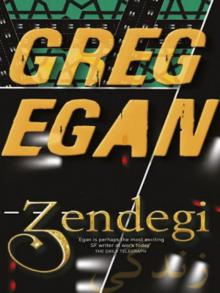 Zendegi
Zendegi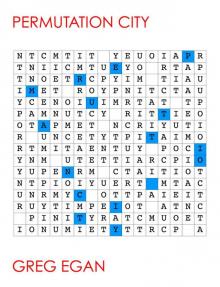 Permutation City
Permutation City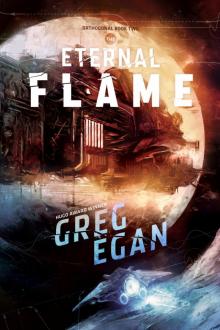 The Eternal Flame
The Eternal Flame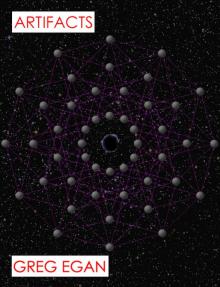 Artifacts
Artifacts Wang's Carpets
Wang's Carpets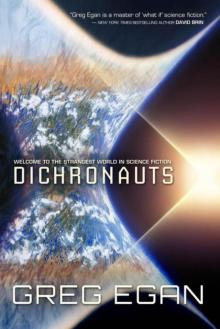 Dichronauts
Dichronauts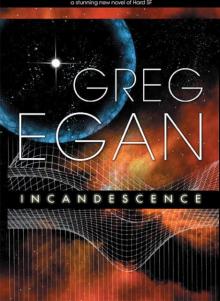 Incandescence
Incandescence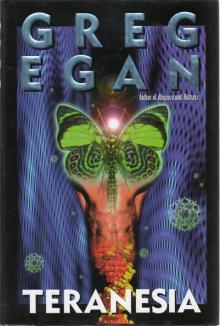 Teranesia
Teranesia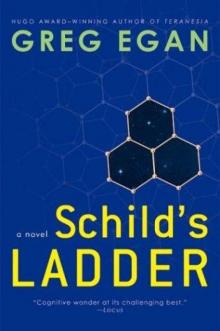 Schild's Ladder
Schild's Ladder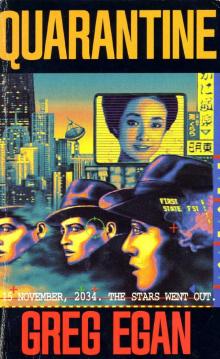 Quarantine
Quarantine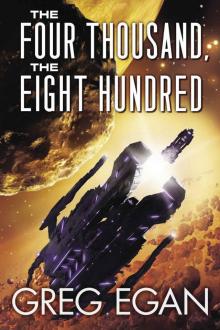 The Four Thousand, the Eight Hundred
The Four Thousand, the Eight Hundred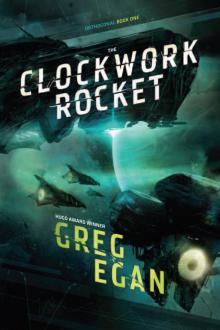 The Clockwork Rocket
The Clockwork Rocket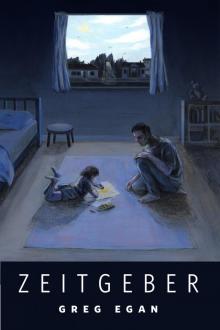 Zeitgeber
Zeitgeber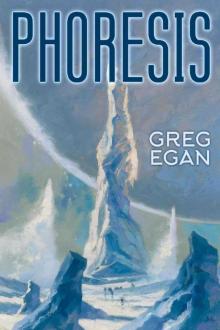 Phoresis
Phoresis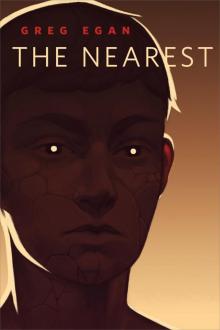 The Nearest
The Nearest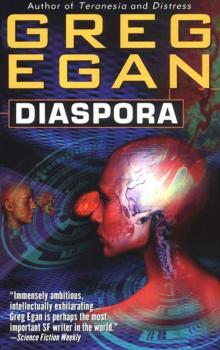 Diaspora
Diaspora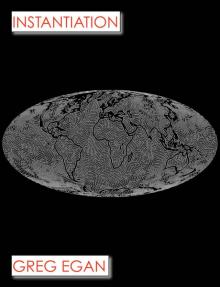 Instantiation
Instantiation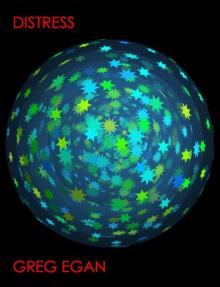 Distress
Distress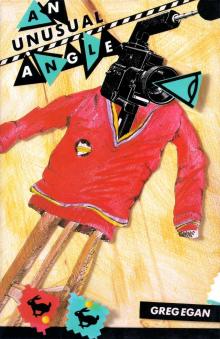 An Unusual Angle
An Unusual Angle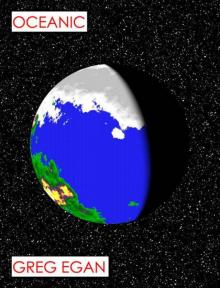 Oceanic
Oceanic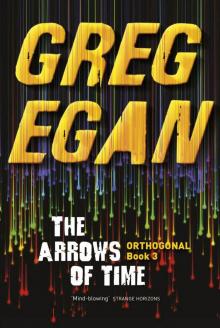 The Arrows of Time
The Arrows of Time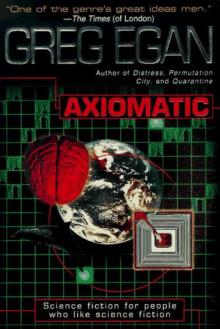 Axiomatic
Axiomatic![Anthology 2. Luminous [1998, 2010] Read online](http://i1.bookreadfree.com/i/03/18/anthology_2_luminous_1998_2010_preview.jpg) Anthology 2. Luminous [1998, 2010]
Anthology 2. Luminous [1998, 2010]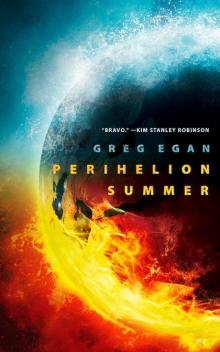 Perihelion Summer
Perihelion Summer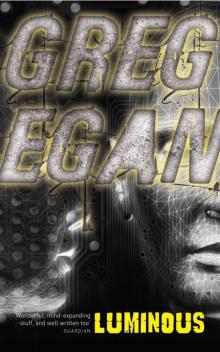 Luminous
Luminous